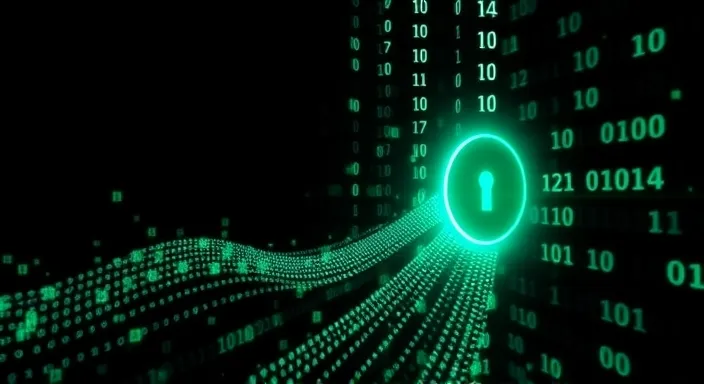A great deal of binary code is a precept of the computers’ language, a very fundamental concept of modern technology. Virtually all digital systems rest on their ground as it empowers computers to process and execute commands. But what really is a lot of binary code, and why is it so important? In this blog, we will dig through a lot of binary code regarding its meaning, usage, and advantages and discuss some of its common issues.
What is a lot of binary code?
At its core, much of binary code is a system of representing data using only two symbols: 0 and 1. This system is based on the base-2 numeral system, which is different from the base-10 system that humans commonly use. Each binary digit, or bit, represents a power of two, and by combining bits, computers can perform complex calculations and store vast amounts of information.
For example:
- The binary number 101 translates to the decimal number 5 (1×2² + 0×2¹ + 1×2⁰).
- The binary number 1101 translates to the decimal number 13.
Why a Lot of Binary Code Matters
A lot of binary code is the backbone of all computer operations. Here are a few reasons why it is not dispensable:
- Simplicity for Machines: A lot of the binary code facilitates the simple electronic circuit designs, as transistors can be distinguished between being in one of two states: either on (1) or off (0).
- Data Storage: From words and pictures to sounds and movies, a lot of binary code is possible to save any kind of data in a totally universally compatible way.
- Communication: Most of the binary code enables smooth communication between different digital devices, which is the foundation of the internet and telecommunication.
Uses:
A lot of binary code is applied in virtually every segment of industries and technologies. Let’s consider the following applications of it:
- Computing: Every piece of software and hardware requires a lot of binary code for its functioning. Operating systems, applications, and even microcontrollers use it to process instructions.
- Networking: A lot of binary code governs how systems transmit and receive data packets over the internet, ensuring accurate and efficient communication.
- Data Encryption: It is through encryption algorithms, much of which comes in the form of “a lot of binary code,” that digital data becomes secure from unauthorized access, thus protecting sensitive data.
- Media Storage and Playback: It is through “a lot of binary code” that all media, whether an MP3 file or a Blu-ray disc, stores and “plays.”
- Artificial Intelligence: Machine learning algorithms and neural networks “process a lot of binary code.”.
Advantages of Lots of Binary Code
The binary system has the following advantages, making it the number one choice in digital systems:
- Less prone to error: much of the binary code is error-free since minor ripples in electric signals have negligible effects on the behavior of a circuit with only two states.
- It saves circuits from design complications and also brings down manufacturing costs.
- General Interoperability: Much of the binary code acts as a language common to all digital devices that users can access and use.
Problems Using Much Binary Code
Although many benefits are available with much binary code, a few problems present themselves:
- Human Understandability: Much binary code does not lend itself easily to human minds to read and write, leading to the creation of higher-level programming languages.
- Data Volume: Representing data in a lot of binary code can lead to large file sizes, requiring compression techniques.
- Correction: Although robust, a lot of binary code systems still require mechanisms to detect and correct errors in data transmission.
Real-World Example: a Lot of Binary Code in Action
Consider a simple image file. In the case of photography, what the camera sees is encoded as a lot of binary code. Each pixel has a color defined by a sequence of binary digits, which is stored on the memory card. In the case of viewing the picture, the device decodes that binary data into a visual format.
| Decimal Value | Binary Equivalent | Color Representation (RGB) |
| 255 | 11111111 | Full intensity (white) |
| 0 | 00000000 | No intensity (black) |
| 128 | 10000000 | Medium intensity (gray) |
How Much Binary Code Determines the Future
With rapid technological advancements, much of binary code continues to be very instrumental. Innovations like quantum computing that are taking humans beyond ordinary binary systems will still rely on binary concepts as foundational principles. Moreover, progress in data compression and error correction will make many of the binary code systems more efficient and resilient.
Conclusion
Much binary code is the merging language of the digital world. Supported in every stride of modern technology, its simplicity, reliability, and versatility make it indispensable for computing, networking, and data storage. Much though challenges exist, ongoing advancements ensure that many of these binary code systems remain efficient and effective. Gaining an understanding of a lot of binary code will therefore provide us with deeper insights on the technologies that shape our lives.
Read Also: What Is The Recommended Approach To Building Knowledge In Tech?
FAQ Section
A lot of binary code represents data representation, communication between devices, and execution of instructions within computing systems.
A lot of binary code uses 0 and 1 because they correspond to the two states of a transistor: off and on. This simplicity enhances reliability and efficiency in digital systems.
A lot of binary code is converted to text using encoding schemes like ASCII, where each letter or symbol is assigned a unique binary value.
Yes, a lot of binary code remains foundational for modern technologies, even as emerging fields like quantum computing explore alternative systems.
The disadvantages are that it cannot be read by humans, that large amounts of data can exist, and error correction mechanisms need to be present.

